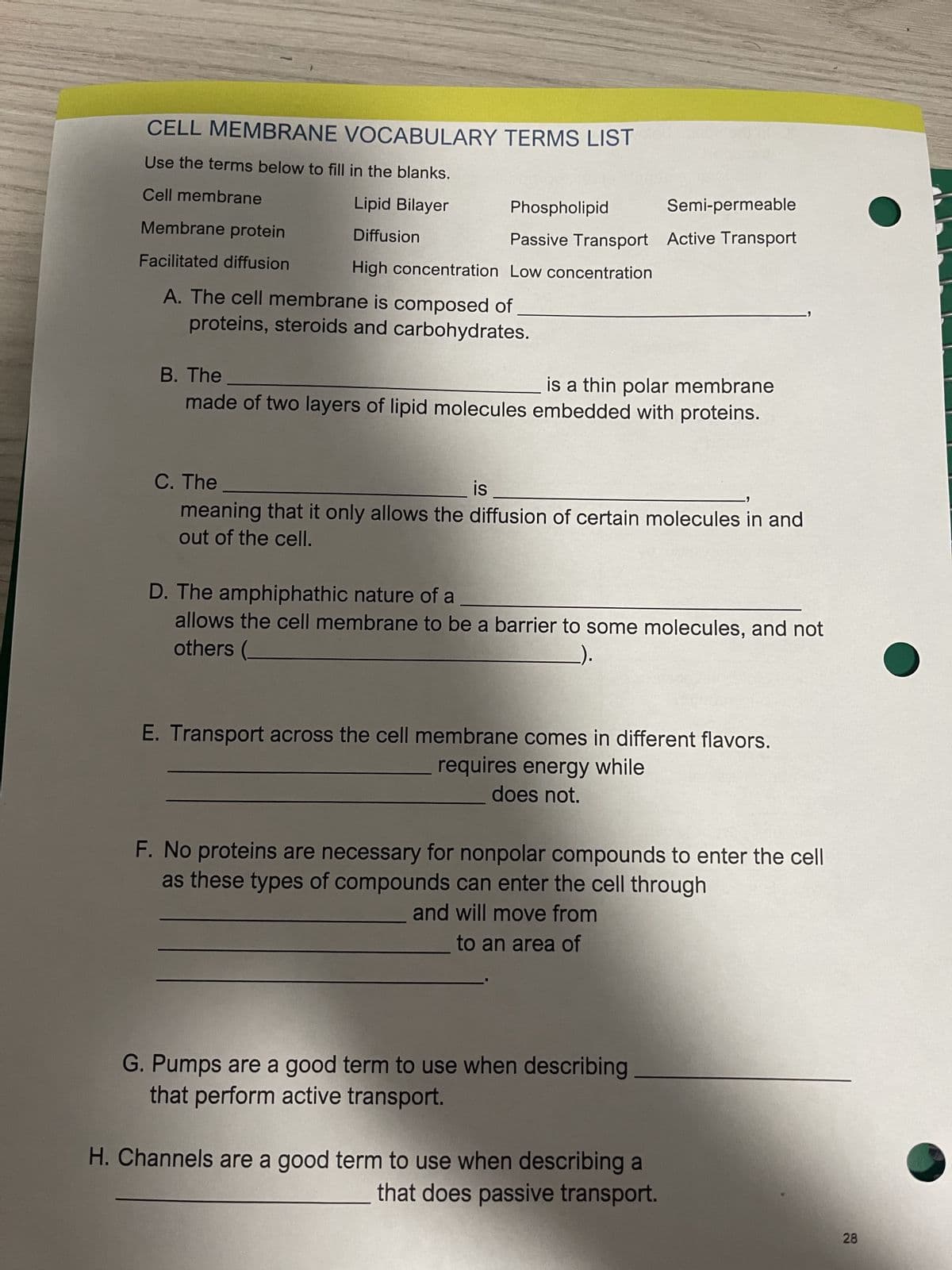CELL MEMBRANE VOCABULARY TERMS LIST Use the terms below to fill in the blanks. Cell membrane Lipid Bilayer Diffusion Membrane protein Facilitated diffusion Phospholipid Semi-permeable Passive Transport Active Transport High concentration Low concentration A. The cell membrane is composed of proteins, steroids and carbohydrates. B. The is a thin polar membrane made of two layers of lipid molecules embedded with proteins. C. The is meaning that it only allows the diffusion of certain molecules in and out of the cell. D. The amphiphathic nature of a allows the cell membrane to be a barrier to some molecules, and not others ( E. Transport across the cell membrane comes in different flavors. requires energy while does not. F. No proteins are necessary for nonpolar compounds to enter the cell as these types of compounds can enter the cell through and will move from to an area of G. Pumps are a good term to use when describing that perform active transport. H. Channels are a good term to use when describing a that does passive transport. 28
G-H

Cell is structural and functional unit of all organisms. The cell was discovered by Robert hooke in 1665. His description were actually non living cell wall was published in Micrographia. The first man to witness the live cell under a microscope was Antony Von Leewenhoek , who in 1674, described the algae Spirogyra and named organisms animalcules meaning little animals.,
MJ Scheiden a German botanist and T Schwann , German zologist, stated that cell is the basic structural and functional unit of all organisms. It was later known as cell theory. Most of the biologist accepted the cell theory given by Scheiden and Schwann, except Rudolph Virchow , and embryologist had powerful dictum that " all cell arise from pre existing cell" .
Trending now
This is a popular solution!
Step by step
Solved in 3 steps







